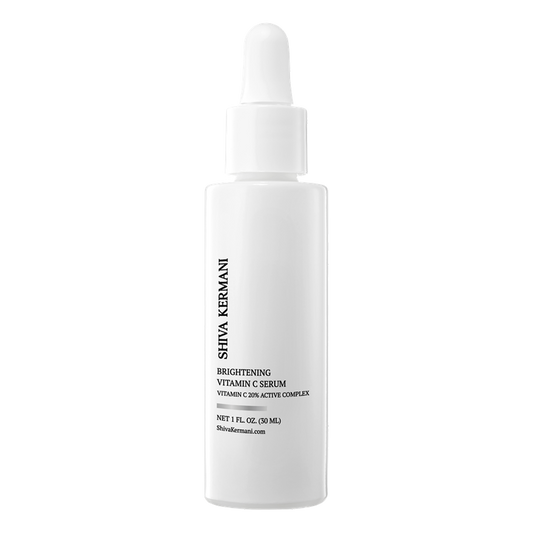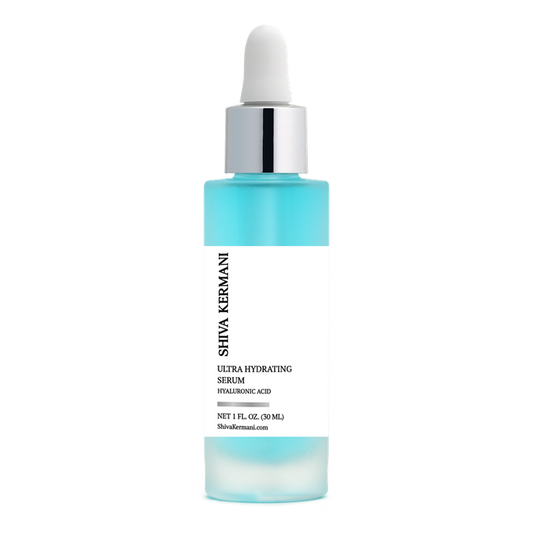Hyaluronic acid (HA) is a naturally occurring sugar molecule found in high concentrations within your skin. It plays an important role in hydrating your skin and helps keep your complexion looking plump, supple, and smooth. As you age, your body produces less hyaluronic acid, which can contribute to dryness and visible signs of aging.
HA functions as a humectant, attracting and retaining moisture from the environment. This property helps maintain skin hydration, leading to a smoother texture and improved elasticity. Regular use of HA can support your skin's health and appearance.
Incorporating hyaluronic acid into your skincare routine can enhance your skin's moisture levels, resulting in a more youthful and radiant appearance. Whether through serums, moisturizers, or other topical applications, HA offers a versatile approach to achieving healthy, hydrated skin.
What is Hyaluronic Acid and How Does It Work?
Hyaluronic acid (HA) is a naturally occurring molecule found throughout your body, with significant concentrations in the skin. It plays a crucial role in maintaining skin hydration and volume. HA acts as a humectant, attracting and retaining moisture, which keeps your skin hydrated and supple. This moisture-binding ability contributes to a plump, youthful complexion.
As we age, natural levels of hyaluronic acid in the skin decrease, leading to dryness and loss of elasticity. Incorporating HA into your skincare routine can help counteract these effects by replenishing moisture, improving skin texture, and reducing the appearance of fine lines. This highlights the importance of hyaluronic acid for healthy skin.
Topical application of HA-based products has been shown to enhance skin hydration and overall skin quality. By integrating hyaluronic acid into your daily regimen, you can support your skin's natural moisture balance and maintain a healthy, radiant appearance.
Hydration Benefits: More Than Just Moisture
Hyaluronic acid (HA) is a naturally occurring glycosaminoglycan found throughout the body's connective tissues, including the skin. It plays a pivotal role in maintaining skin hydration and elasticity. HA has a unique capacity to bind and retain water molecules, contributing significantly to the skin's moisture content. This ability to attract and hold water keeps your skin hydrated, plump, and supple. Consequently, incorporating hyaluronic acid into your skincare routine is essential for maintaining healthy, youthful-looking skin.
Beyond its moisture-binding properties, HA contributes to a healthy skin barrier. A robust skin barrier prevents dehydration and shields against environmental aggressors. By maintaining optimal hydration levels, hyaluronic acid supports the skin's natural defense mechanisms, reducing transepidermal water loss and enhancing overall skin health. Therefore, using hyaluronic acid for healthy skin not only ensures adequate moisture but also fortifies the skin's resilience against external factors.
Incorporating HA into your skincare regimen can lead to visible improvements in skin texture and appearance. Regular use of HA-containing products can result in smoother, more radiant skin, as it enhances moisture retention and supports the skin's structural integrity. This makes hyaluronic acid a valuable component in achieving and maintaining healthy, hydrated skin.
In summary, hyaluronic acid's ability to bind water molecules and support the skin barrier makes it indispensable for skin health. By attracting and retaining moisture, HA keeps your skin hydrated and supple. Additionally, it reinforces the skin's natural defenses, preventing dehydration and protecting against environmental stressors. Incorporating HA into your skincare routine is a proactive step toward achieving and maintaining healthy, vibrant skin.
Hyaluronic Acid for Fine Lines and Wrinkles
Hyaluronic acid (HA) is a naturally occurring molecule in your skin, renowned for its remarkable ability to attract and retain moisture. This hydration not only keeps your skin supple but also plays a crucial role in maintaining elasticity. As we age, the natural levels of HA in our skin decrease, leading to dryness and the formation of fine lines and wrinkles. By replenishing HA through topical applications, you can effectively plump the skin, smoothing out these imperfections and promoting a more youthful appearance.
The relationship between skin hydration and elasticity is deeply interconnected. Adequate moisture levels ensure that collagen and elastin fibers function optimally, providing structural support and resilience. When your skin is well-hydrated, it maintains its firmness and elasticity, reducing the likelihood of sagging and wrinkle formation. Conversely, dehydration can compromise these fibers, leading to decreased elasticity and the appearance of fine lines. Therefore, maintaining proper hydration is essential for preserving skin elasticity and achieving a smooth, youthful complexion.
Incorporating hyaluronic acid into your skincare routine is a strategic approach to combat the signs of aging. By attracting and retaining moisture, HA not only hydrates but also enhances skin elasticity, making it a cornerstone ingredient for those seeking to maintain healthy, youthful skin. Regular use of HA-containing products can lead to significant improvements in skin texture and appearance, reinforcing the importance of hydration in your anti-aging regimen.
How to Layer Hyaluronic Acid for Maximum Absorption
Achieving optimal skin hydration involves not just the products you use but also how you apply them. To maximize the benefits of hyaluronic acid (HA), proper layering in your skincare routine is essential.
Application on Damp Skin
After cleansing, while your skin is still damp, apply a few drops of HA serum. This method helps HA attract and retain moisture more effectively. Gently press the serum into your face and neck using your palms. This technique ensures better absorption.
Combining with Peptides
HA pairs well with peptides, which are short chains of amino acids that support skin structure. After applying HA, layer a peptide-rich serum or moisturizer. This combination enhances hydration and promotes collagen production, contributing to firmer skin.
Incorporating Ceramides
Ceramides are lipids that form a protective layer, preventing moisture loss. Applying a ceramide-infused product after your HA serum can lock in hydration. This step reinforces the skin barrier, keeping it supple and resilient.
Layering Sequence
To optimize absorption, apply skincare products from thinnest to thickest consistency. Start with HA serum, followed by peptide or ceramide treatments, and finish with a moisturizer. This order ensures each product penetrates effectively without hindrance.
Avoiding Potential Conflicts
While HA is versatile, be cautious when layering with exfoliating acids like AHAs or BHAs. These acids can alter the skin's pH, potentially reducing HA's efficacy. It's advisable to use exfoliating acids at different times than HA to prevent interactions.
By thoughtfully layering HA with complementary ingredients, you enhance its hydrating properties, promoting healthier, more resilient skin.
Combining Hyaluronic Acid with Other Active Ingredients
Combining hyaluronic acid with other active ingredients can significantly enhance your skincare routine. When paired with vitamin C, hyaluronic acid boosts hydration while vitamin C brightens the skin and provides antioxidant protection. This combination leads to a more radiant and even complexion. Niacinamide, another beneficial ingredient, works harmoniously with hyaluronic acid to improve skin elasticity and strengthen the skin barrier. Together, they enhance moisture retention and reduce the appearance of fine lines.
Additionally, hyaluronic acid pairs well with retinol, a renowned anti-aging ingredient. Retinol promotes skin cell turnover but can sometimes cause dryness and irritation. Incorporating hyaluronic acid helps counteract these effects by providing intense hydration, making retinol more tolerable for your skin. This combination allows you to enjoy the benefits of retinol without compromising skin moisture.
By thoughtfully combining hyaluronic acid with these active ingredients, you can create a comprehensive skincare regimen. This approach addresses multiple skin concerns, leading to a healthier, more youthful complexion.
Common Mistakes When Using Hyaluronic Acid
Applying hyaluronic acid incorrectly can lead to moisture loss, undermining its hydrating benefits. When applied to dry skin, hyaluronic acid may draw moisture from deeper layers, causing dehydration. Therefore, always apply it to damp skin to enhance its effectiveness.
After applying hyaluronic acid, it's essential to seal it in with a moisturizer. This step locks in hydration, preventing water loss and maintaining skin suppleness. Neglecting this can result in dryness, as the moisture attracted by hyaluronic acid may evaporate without a protective barrier.
Incorporating hyaluronic acid correctly into your routine promotes healthy, hydrated skin. By applying it to damp skin and following up with a suitable moisturizer, you maximize its benefits. This approach ensures that hyaluronic acid functions effectively, contributing to overall skin health and radiance.
Conclusion
Incorporating hyaluronic acid into your skincare routine offers numerous benefits. This naturally occurring molecule excels at attracting and retaining moisture, leading to hydrated, supple skin. It also plays a role in reducing the appearance of fine lines and wrinkles, enhancing skin elasticity, and maintaining a healthy skin barrier. To maximize these benefits, apply hyaluronic acid to damp skin and follow with a suitable moisturizer to lock in hydration. Combining it with ingredients like peptides and ceramides can further boost its effectiveness. By understanding and utilizing hyaluronic acid properly, you can achieve and maintain healthier, more youthful-looking skin.





